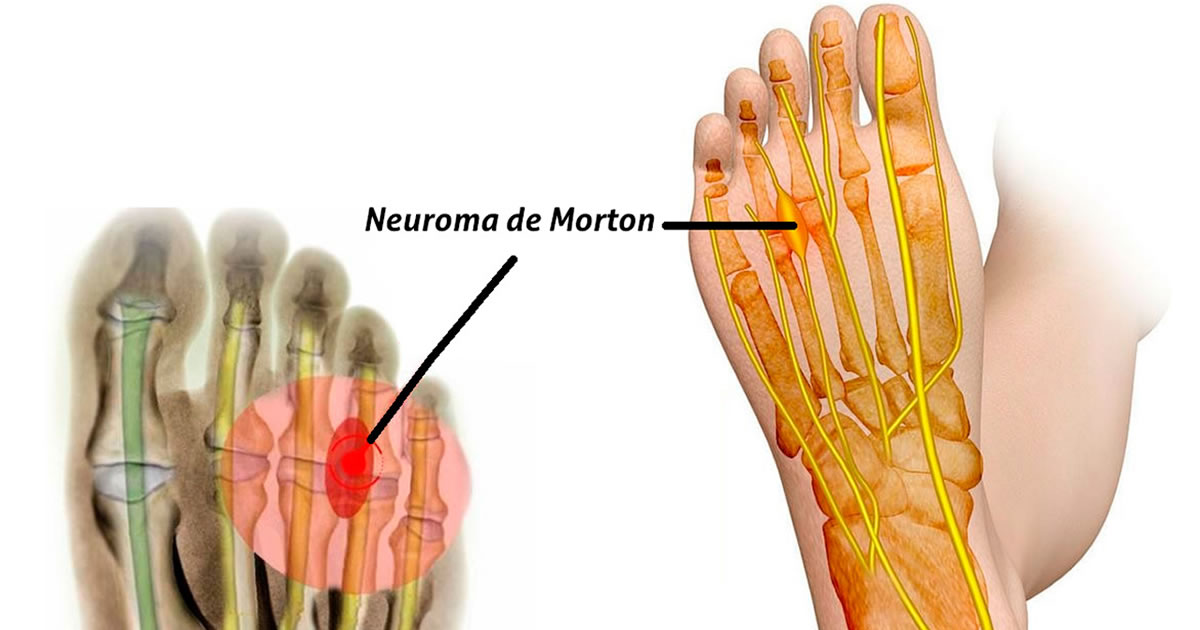
Morton’s neuroma is a painful pathology that affects the metatarsus, most often in the place between the third and fourth toes. It usually feels like you have a stone in your shoe or a crease in your sock.
Morton’s neuroma involves thickening the tissue around one of the nerves in the toes. Causing a sharp pain with burning on the sole of the foot. You may have itching, burning, or numbness in your affected fingers.
High-heeled or tight-heeled shoes are linked to the development of Morton’s neuroma. People feel relief when they start wearing shoes with lower heels and a wider toe cap. Sometimes corticosteroid injections or surgery are needed.
SYMPTOMS.
In general, in patients who have Morton’s neuroma, there is no outward sign of this condition, such as a lump. Instead, you may have the following symptoms:
- A feeling like I had a stone in my shoe
- A recurring pain in the front of the foot that can spread to the toes
- Tingling or numbness in the toes
In addition to these symptoms, you may find that taking off your shoes and rubbing your feet often helps relieve pain.
RISK FACTORS
Factors that appear to contribute to Morton’s neuroma include:
- High heels. Wearing shoes that are high-heeled or tight or have a poor fit can put extra pressure on your toes and the sole of your foot.
- Certain sports. Participating in high-impact athletic activities such as jogging or running can subject your feet to a repetitive injury. Sports that are characterized by wearing tight shoes, such as snow skiing or mountain climbing, can put pressure on the fingers.
- Foot deformities. People who have bunions, hammertoes, cavus foot, or flat foot are at increased risk of developing Morton’s neuroma.
TRATAMIENTO
It is the attending physician who is responsible for determining the most advisable treatment in each case of Morton’s neuroma. Your doctor will probably recommend trying conservative approaches first.
TERAPIA
The most recommended therapy in patients with Morton’s neuroma is to wear shoes with sufficient space in the metatarsophalangeal region of the foot and in the tip of the foot “THERAPEUTIC AND BIOMECHANICAL FOOTWEAR BOCCIO”, shoes manufactured according to the individual and particular need of each patient, made with 100% natural materials, comfortable and designed especially for this type of situation, it is one of the most effective therapies. Orthopedic insoles and foot pads, such as metatarsal pads, fit inside the shoe and help reduce pressure on the nerve.
CIRUGÍAS AND OTHER PROCEDURES.
If conservative treatments haven’t helped, your doctor may suggest:
- Injections. Some patients have been relieved with steroid injections in the area where they feel pain.
- Surgery for decompression. Occasionally, surgeons can relieve pressure on the nerve by cutting nearby structures, such as the ligaments that join the bones in the delatera part of the foot.
- Removal of the nerve. Removal of the lump with surgery may be necessary if other treatments have not improved the patient’s condition. Although surgery is usually successful, the procedure can result in permanent numbness of the affected toes.
